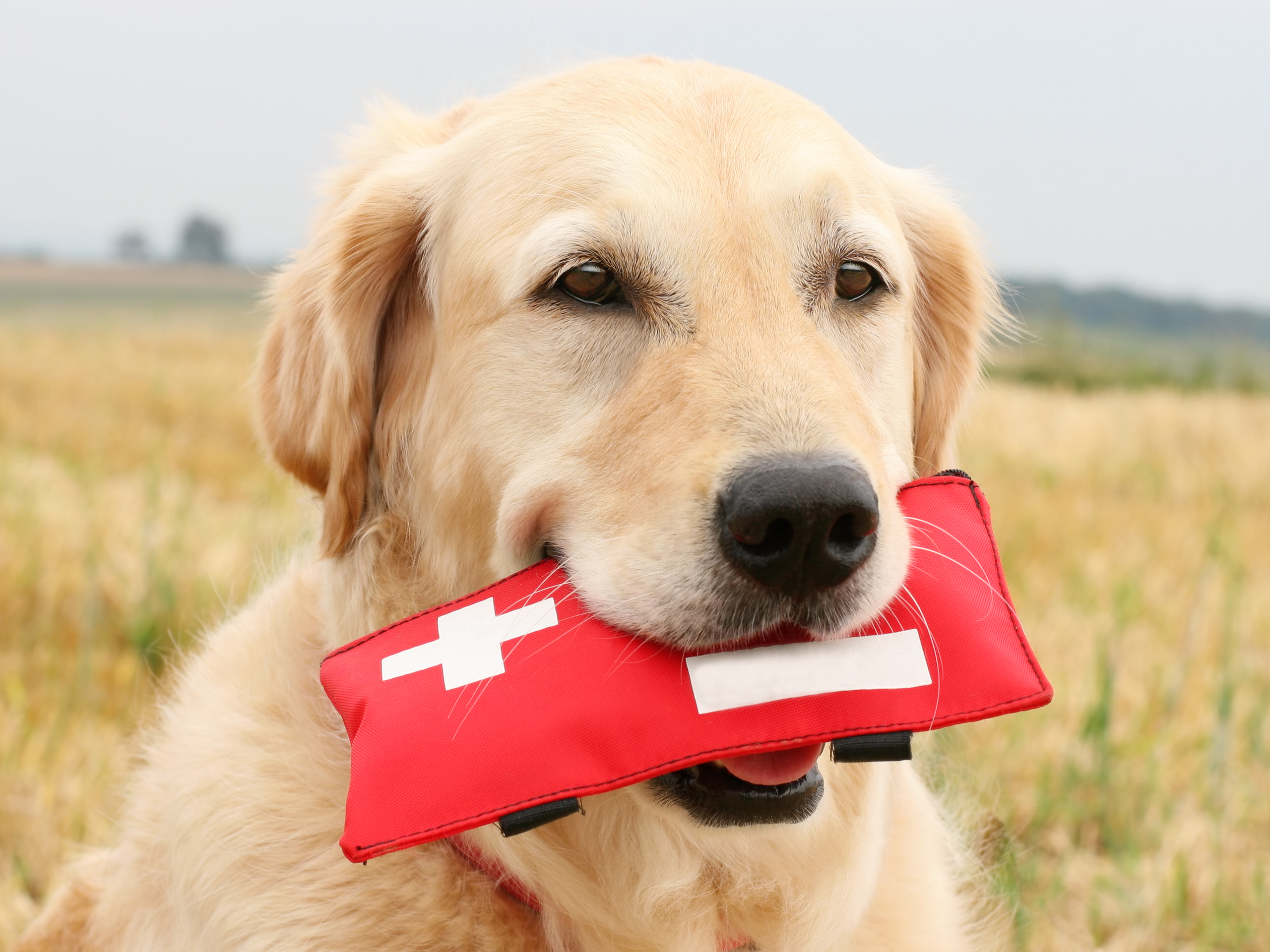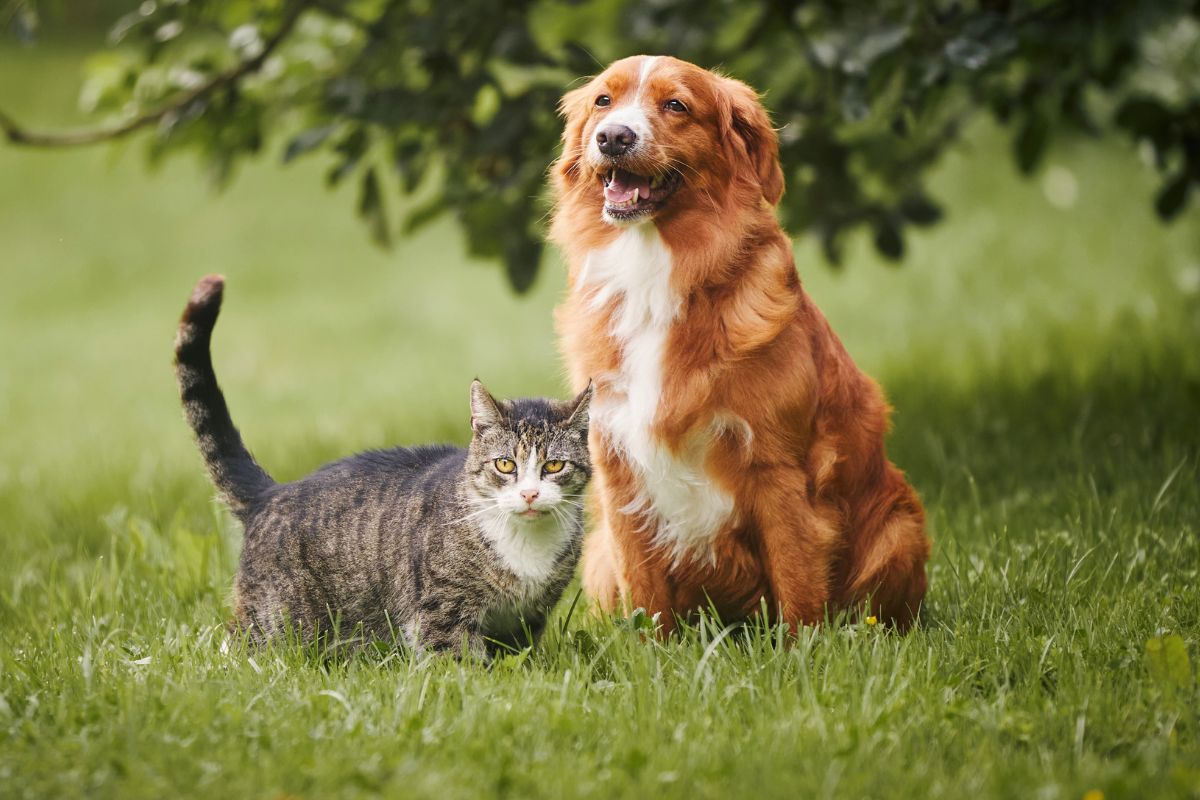Our pets often surprise us with their curiosity and occasional unpredictability. While we all hope to avoid emergencies, being prepared with basic first aid knowledge can help save your pet’s life. Read on for essential first aid tips for common pet injuries every pet owner should know.
Quick links
First aid tips for:
Stay calm and assess the situation
In any emergency, maintaining composure is key. Approach your pet slowly and carefully, keeping in mind that they may act unpredictably when injured or scared. Ensure you manage your own safety and those around you by using appropriate restraints, like a muzzle, if needed. Evaluate the severity of the situation and determine if immediate veterinary attention is needed.
Control bleeding
Apply direct pressure to the wound with a clean cloth or gauze pad to stop the bleeding. Seek immediate veterinary attention if the bleeding is severe. If the bleeding is mild, once the bleeding has stopped, apply a clean bandage, and seek veterinary care.
Handle fractures with care
If you suspect a broken bone or fracture, handle your pet gently and avoid moving the injured limb. If your pet allows it, use a makeshift splint, using rolled-up newspapers or cardboard, to immobilise the area. Wrap a towel or blanket gently around the limb for support before transporting them to your nearest veterinary clinic. If there’s an open wound, apply a bandage to the wound area. Keep in mind that fractures can cause severe pain, so be careful not to get bitten.
Perform CPR if necessary
In cases of cardiac arrest or respiratory distress, knowing how to perform CPR can be lifesaving. Check for breathing and a heartbeat. If absent, begin chest compressions and breathing for your pet, following the guidelines recommended for your pet’s size and species.
Address heatstroke
Move your pet to a cooler area immediately if they show signs of heatstroke, such as excessive panting, drooling, weakness, or collapse. Apply cool, wet towels to their body and offer small sips of water. Seek veterinary care immediately, as heatstroke can be fatal if left untreated.
Recognise poisoning symptoms
Pets can accidentally ingest toxic substances such as household cleaners, medications, plants, or human foods. Watch for symptoms like vomiting, diarrhea, drooling, seizures, or lethargy If you suspect your pet has ingested a toxic substance. Contact your vet or a pet poison control hotline for guidance on appropriate treatment.
Manage choking or airway obstructions
Pets, especially dogs, may choke on small objects or pieces of food. If your pet is choking, try to remove the obstruction from their mouth using your fingers or a pair of tweezers. You can also attempt the Heimlich manoeuvre by following these instructions with great caution and care. Seek veterinary care immediately if the object can’t be dislodged.
- Raise your pet onto their hind legs; their hind feet can rest on the floor or you can lift your pet off the ground depending on their weight
- Place your pet’s back against your front (for larger dogs you may have to lower your body position); your pet’s spine should be supported against your front at all times
- Place your arms around your pet just under the ribs, where the ribs finish and the abdomen starts
- Squeeze your pet firmly up and forward
- Repeat four times
Or,
- Hold your pet upside down by their back legs, suspend in the air
- Firmly deliver a blow using your hand to the abdomen of your pet, in the area of where the ribs finish and the abdomen starts
- Repeat four times
Treat bites, punctures and fight wounds
If you suspect your pet has been in a fight, it’s very important you seek veterinary care immediately because bites can quickly lead to infections and additional complications such as internal bleeding, airway damage, bruising and fractures – some of which may not be visible from the surface.
Address burns
Burns aren’t always immediately obvious and can take up to 12-24 hours for symptoms like redness of the skin, blistering and hair loss to appear. Burns can result from various sources such as heat (eg flame, water, oil, sun), chemicals, electricity or cold (eg ice, liquid nitrogen). If you suspect your pet has been burned, cool the area immediately with cool running water for at least five minutes. Apply a cool compress to the area (avoid putting icepacks directly on the skin, instead, wrap it in a towel). Keep your pet warm by wrapping them in a blanket and transport them to your vet.
Handle insect bites
Remove the stinger (if it’s in the bite) using tweezers and apply a cold compress to reduce swelling. Monitor your pet for any developing symptoms and ensure they remain hydrated. If your pet appears uncomfortable or develops a more severe reaction after removing the stinger, take them to your vet for pain relief medication and antihistamines to reduce the inflammation.
Manage seizures
During a seizure, ensure your pet is in a safe environment, free from any objects that could cause injury and refrain from touching them until the seizure subsides. Once the seizure has passed, check your pet is breathing and there is no airway obstruction, and take your pet to the vet immediately.
Address eye injuries
If your pet has sustained an eye injury, or they’re showing signs of eye pain such as pawing, rubbing, squinting, excessive tears or discharge, your pet needs veterinary care urgently. Eye injuries can be extremely painful and, if they are left untreated can quickly result in blindness. To prevent further damage, consider using an Elizabethan collar to prevent rubbing. If you don’t have one, supervise your pet to prevent further irritation and take them straight to the vet.
Handle penetrating objects
If your pet has a penetrating wound with a foreign object lodged in it, don’t attempt to pull the object out. Instead, if possible and without causing harm to your pet, trim the protruding part of the object to 3-4 centimetres above the skin level. Avoid moving the object in chest wounds and limit your pet’s movement. If possible, wrap the chest to create a protective barrier. Cover the wound with plastic wrap to maintain an airtight environment without applying pressure on the impaled object. Seek immediate veterinary care for your pet.
Have a pet first aid kit ready
Prepare a pet first aid kit containing essential supplies such as gauze pads, adhesive tape, antiseptic wipes, scissors, tweezers, bandages and a digital thermometer. Include your pet’s medical records, emergency contact numbers, and a pet first aid guide for reference. Keep the kit in a readily accessible location at home and when traveling with your pet.
Seek professional veterinary care
While first aid measures are important, they are not substitutes for professional veterinary care. Always seek veterinary attention for serious injuries, illnesses, or emergencies. Your vet can evaluate your pet and provide treatment and ongoing care tailored to your pet’s needs.
If you have a Best for Pet Wellness Plan, you have access to 24/7 VetChat included in your membership.
By familiarising yourself with these first aid tips and being prepared for emergencies, you can become a proactive and confident pet owner capable of handling unexpected situations effectively. Remember always to prioritise your pet’s safety and wellbeing, and don’t hesitate to seek veterinary help when needed. Your quick actions and preparedness can significantly impact your pet’s health and recovery.







